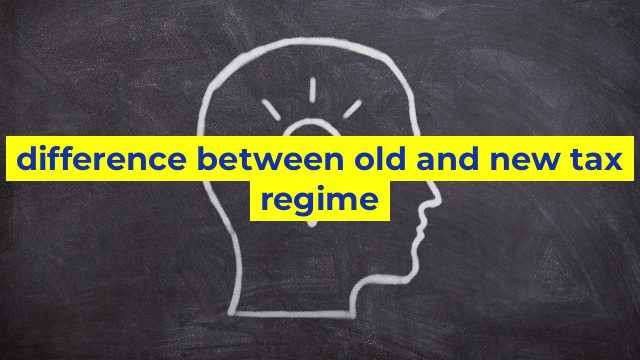Difference between old and new tax regime
The Indian government has introduced a new tax regime that is designed to simplify the tax system for individuals. Before the new tax regime was introduced, there was an older system in place that differed in several ways. Here are the main differences between the old and new tax regimes.
Slab rates
Under the old tax regime, taxpayers had to pay taxes according to the income tax slab rates. These rates ranged from 0% to 30%. However, in the new tax regime, taxpayers can choose to pay taxes at lower rates without claiming deductions and exemptions. The new tax regime has seven tax slabs ranging from 5% to 30%.
Standard deduction
The old tax regime allowed for a standard deduction of Rs. 50,000 for salaried individuals. However, the new tax regime does not provide for a standard deduction. Taxpayers need to choose between the old and new tax regime based on which one is more advantageous for them.
Deductions and exemptions
Under the old tax regime, individuals could claim several deductions and exemptions to reduce their taxable income. These deductions included exemptions for HRA, medical expenses, and education expenses. Under the new tax regime, these deductions and exemptions are not available.
Investments and savings
In the old tax regime, taxpayers could invest in various savings schemes such as PPF, ELSS, and NSC to avail of tax exemptions. However, under the new tax regime, these exemptions are not available. Taxpayers need to evaluate whether to choose the old or new tax regime based on the financial decisions they make.
Conclusion
The new tax regime has simplified the tax system but has taken away some of the benefits that were available under the old tax regime. Taxpayers need to carefully assess which regime is best suited to their financial situation. It is always advisable to seek professional advice before making a decision.
Table difference between old and new tax regime
| Criteria | Old Tax Regime | New Tax Regime |
|---|---|---|
| Tax slabs | 4 (0-5 lakhs, 5-10 lakhs, 10-15 lakhs, above 15 lakhs) | 3 (0-2.5 lakhs, 2.5-5 lakhs, 5-7.5 lakhs, 7.5-10 lakhs, 10-12.5 lakhs, 12.5-15 lakhs, above 15 lakhs) |
| Tax rates | 5%, 20%, 30% | 5%, 10%, 15%, 20%, 25%, 30% |
| Deductions and exemptions | Allowed for investments under Section 80C, 80D, 80G, etc. | Not applicable |
| Tax calculation | Based on income and applicable tax slabs | Flat rate based on income |
| Financial impact | May result in higher tax liability for individuals with higher income and investments | May result in lower tax liability for individuals with lower income and no investments |

